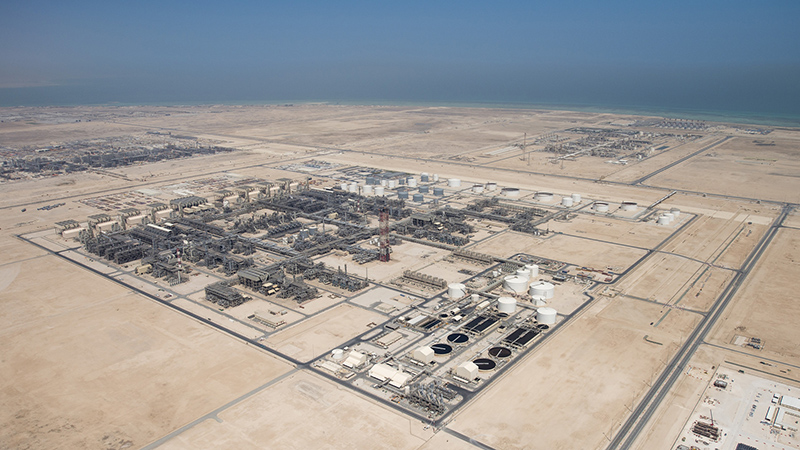“Don’t worry, we got it.” On the day the UN’s climate change agreement became international law, BP chief executive Bob Dudley was keen to reassure his company had its back.
Seven of the world’s largest oil and gas firms chose floor 21 of London’s Shard skyscraper to announce their contribution to the global carbon cutting pact.
At its heart is a promise to invest US$1 billion in the next decade into squeezing the environmental footprint of the industry by targeting efficiency, methane emissions and capturing carbon dioxide.
The Oil and Gas Climate Initiative (OGCI) welcomed the Paris climate agreement, said Dudley, who stressed his commitment to keeping the “door open to future prosperity and wealth”.
What the industry says and does matters: it may have cut operational emissions 25% in the past 10 years, but burning its products generates an estimated 37% of annual global greenhouse gases.
Protests outside Shard as oil majors launch new gas-heavy #climate plan pic.twitter.com/4H9nZ5tNrw
— Climate Home News (@ClimateHome) November 4, 2016
Flanked by fellow CEOs from Total, Shell, Saudi Aramco, Statoil, Repsol and ENI, the launch of the plan and accompanying report was slickly presented.
Sitting on white leather seats in front of a crisp backdrop framed by a stunning views across London, the oil chiefs each emphasised their support for efforts to limit global warming.
“It’s not philanthropy. It’s business. It’s because the energy mix of the world will evolve,” said Patrick Pouyanne, who runs French oil giant Total.
“It is the right direction,” said Amin Nasser, president of Saudi Aramco. “It’s a start,” chipped in Eldar Saetre, CEO of Statoil.
The plan in brief
The majors say they want to “unblock” the path to financially viable carbon capture and storage technology. Just 15 plants are working around the world, with 17 under construction. That adds up to 1% of the 6.1 billion tonnes of CO2 a year the IEA says needs to be stored by 2050.
Methane is a greenhouse gas with a warming potential 28 times that of CO2 emitted during drilling and extraction of natural gas. For gas to play a role in a lower carbon future “we need to understand and control methane emissions more effectively,” say the majors.
In the coming years, the executives explained OGCI will partner with leading universities and research institutes to explore ways to make the industry more efficient.
And yet the key theme all returned to was not climate but gas, and the role of this fuel to not only offer a bridge to a lower carbon world but become the foundations of future growth.
“I believe natural gas is not just transition but a destination fuel,” said Shell CEO Bill Van Beurden.
“Natural gas is a low and lower carbon alternative to coal… significantly lower – it’s a good option… and can fill in the intermittency of renewables,” said Dudley.
“There is a business and societal case for increasing the use of natural gas in the energy mix of growing economies,” said Pouyanne.
“We need to be efficient and look at a low carbon future but without thinking that we can stop using oil and gas overnight – be realistic,” urged ENI’s Claudio Descalzi.
Are governments serious about their climate targets and 'well below 2°C', or is the #ParisAgreement just locker room talk? #LCEI pic.twitter.com/F5zDEIkts1
— Jonathan Grant (@JG_climate) November 4, 2016
$1 billion over a decade between 10 companies is tiny compared to the $5 trillion energy funding the International Energy Agency (IEA) says is needed by 2035, pointed out a reporter from Argus Media.
“We are doing a lot. We are doing billions. It is just a start for us,” said Van Beurden.
Asked by the Financial Times why the initiative had no renewables component, Pouyanne said the goal was to focus on areas where the OGCI had common ground.
“We cannot do everything. Each company has a renewables strategy, but this is a collective effort. We think these areas are very challenging,” he said.
Pushed on research indicating 30% known oil and 50% of gas reserves are cannot be burnt if the world wants to avoid warming of beyond 2C by Bloomberg, the panel said it was down to economics, not science.
“Reserves are measured on what is economic… of course we will it leave in ground if they are not economic. We will improve the work we do towards different scenarios each year. We will do what is economic,” said Dudley.
“In the end it will be economics that is driving it. The value of public companies is based on proved reserves… and it is rather unlikely these reserves will not be produced,” said Van Beurden.
“Oil will continue to be part of the energy mix for decades to come,” added Aramco’s Nasser.
Comment: Now the Paris climate deal is live, the hard work begins
A small protest by the 350 campaign group at the foot of the Shard hinted at deep unease among environmentalists over the scope and ambition of the plans unveiled today.
“The only way for the Paris climate agreement to represent a turning point in the fight against climate change is by keeping fossil fuels in the ground,” said the campaign group’s programme director Payal Parekh.
Analysts at the Carbon Tracker Initiative, who closely follow oil major business plans, reckon they have $85 billion of planned investment in 2016.
Oil demand projections by BP and Shell are consistent with warming well over 2C, says CTI, and in some cases over 4C.
“These companies must match rhetoric with real action and stop tinkering around the edges,” said CTI’s CEO Anthony Hobley.
“Whatever their rhetoric on climate change, Big Oil’s actions prove their dogged determination to protect a climate destructive business model,” said Charlie Kronick, Senior Programme Advisor at Greenpeace UK.
